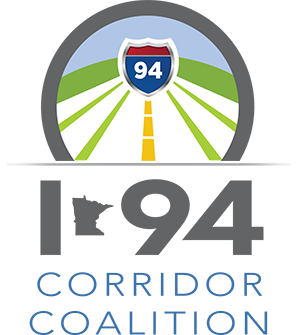By Kelly Smith Star Tribune
Rogers is the last city on westbound Interstate 94 in Hennepin County but the first city more residents and businesses are calling home.
The northwest metro suburb is the fastest growing city in Minnesota — and it isn’t slowing down, with plans for more large-scale housing and industrial developments over the next few years.
Hugging the edge of Hennepin County across the Crow River from Otsego and St. Michael, Rogers is still relatively small with only 12,500 residents. But it’s seen a dramatic 42 percent bump in population in just over four years. That’s largely due to the annexation of Hassan Township, which was the county’s last township when it merged its 17 square miles and 2,600 residents with Rogers in 2012.“We’ve grown tremendously,” Mayor Rick Ihli said. “We want to build our community up so our citizens don’t have to go to Maple Grove to shop, they don’t have to go to Maple Grove to eat. And that’s where we’re headed.”
Even without Hassan’s population, Rogers’ city leaders said it’s had a more than 10 percent increase in residents, and that still puts it in the top fastest growing cities in the state.
The growth spurt hasn’t come without challenges. The city is grappling with issues other suburbs long have had to deal with — figuring out how to pay for rebuilding and adding roads, redeveloping its downtown and balancing its small-town character with suburban-style development.
“We’re protective of that small-town feel,” said resident Shannon Klick, who moved to Rogers three years ago from Maple Grove for its schools, youth sports and bigger home lots. “We don’t want to become a big city where there’s small lots … we don’t want to grow too fast.”
Christi Tullbane was driving past Rogers on I-94 eight years ago to her house in Maple Grove when she spotted an intriguing housing development sign. She and her husband, drawn to the city’s small-town feel, moved to Rogers for a new house on a larger half-acre lot for their three young daughters.
“There’s just that sense of community,” she said.
Larger home lots, small schools and a gateway location to the metro area are drawing new residents to Rogers, while the wide open spaces are bringing a huge influx in industrial development — with 1.9 million square feet being built since 2011.
“It’s really booming here,” said DJ Hartley, who runs the I-94 West Chamber of Commerce.
Keeping small-town feel
Population projections from the Metropolitan Council say that Rogers will pass 14,000 residents in the next four years and hit 18,000 by 2030.
But in a community still known for farmland and open spaces, bringing in higher density housing to meet the Metropolitan Council’s requirement spurred some resident backlash this year over smaller lot sizes.
And when the city proposed imposing franchise fees on public utilities — an increasingly popular funding method cities are using to pay for projects — residents rallied against the idea.
Nevertheless, city leaders say, home lots are still larger than most other metro cities’, and taxes have remained relatively flat.
“We’re still a rural community,” said Ihli, reeling off a list of the last names of longtime families and owners of four-generation-owned farms.
This year, new housing developments have slowed because of the reduced availability of lots, with about 50 new homes being built. But there are future plans for another 500,000 square feet of industrial development and a 300-acre housing development, City Administrator Steve Stahmer said.
“There’s plenty of room for growth,” he said, but “we’re not looking to outpace ourselves or grow too quickly.”
‘It’s really booming’
Just two decades ago, Rogers had no stoplights and only one school. Now its high school is building a third wing and home lots are sprouting out of former farm fields. New major businesses, like a massive FedEx Ground distribution center, are drawing hundreds of jobs.
The city’s population jumped from 2,649 people in 1990 to more than 11,000 residents in 2010, according to census data. Now the city is nearing 13,000 residents, half of whom commute 30 or more minutes to work, usually to Minneapolis and other west metro suburbs.
Employers in Rogers provide nearly 10,000 jobs, drawing employees from across the metro to companies like Graco Inc. and Cabela’s.
“It’s not a bedroom community,” Stahmer said.
Lifelong resident Dave Christian, who was born on a farm in Rogers, has watched the town’s dramatic shift.
“It’s unbelievable; this place is just gangbusters,” he said. “We’ve had some of the largest companies move in here.”
Aside from the lack of affordable housing, which he believes is needed, he said many long-term residents like himself are pleased with Rogers’ evolution.
“It’s really been a blessing and boon to this town,” he said. “We’re living in a little paradise here — it’s the place to be, that’s for sure.”


